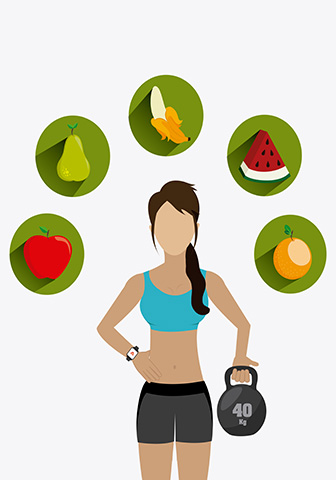Nourish Your Body
Nourish Your Body
Nourishing your body is the fundamental act of self-care that underpins our health and vitality. Just as a well-tended garden flourishes, our bodies thrive when we provide them with the right nutrients and care. This introductory paragraph underscores the essential concept of nourishment, emphasizing its critical role in fostering a healthy and balanced life. It serves as a reminder that what we put into our bodies significantly shapes our physical, mental, and emotional well-being.
Day 1: Assess Your Current Eating Habits
Keep a food journal to track what you eat throughout the day.
Identify areas where you can make healthier choices and note any patterns or triggers for unhealthy eating.
Day 2: Create a Meal Plan
Plan your meals for the week, incorporating a balance of vegetables, fruits, whole grains, lean proteins, and healthy fats.
Make a grocery list based on your meal plan and stock up on nutritious ingredients.
Day 3: Grocery Shopping for Health
Visit your local grocery store or market.
Focus on purchasing fresh produce, whole grains, lean meats, and healthy snacks.
Avoid buying processed foods or those high in added sugars and unhealthy fats.
Day 4: Prep and Batch Cooking
Dedicate some time to meal prepping and batch cooking for the upcoming days.
Chop vegetables, cook grains, and prepare protein sources in advance for easier meal assembly throughout the week.
Day 5: Mindful Eating
Practice mindful eating by slowing down and savoring each bite.
Pay attention to hunger and fullness cues, and eat until you feel comfortably satisfied.
Minimize distractions during meals, such as electronic devices or television.
Day 6: Incorporate Colorful Fruits and Vegetables
Aim to fill half your plate with a variety of colorful fruits and vegetables.
Explore different cooking methods like steaming, roasting, or sautéing to enhance flavors.
Day 7: Whole Grain Focus
Replace refined grains with whole grain alternatives like quinoa, brown rice, whole wheat bread, or oats.
Experiment with new whole grain recipes, such as salads, stir-fries, or grain bowls.
Day 8: Plant-Based Protein Options
Try incorporating plant-based proteins like beans, lentils, tofu, tempeh, or chickpeas into your meals.
Experiment with vegetarian or vegan recipes to discover new flavors and textures.
Day 9: Healthy Fats
Include sources of healthy fats in your diet, such as avocados, nuts, seeds, olive oil, or fatty fish like salmon.
Use these fats in moderation to enhance the taste and nutritional value of your meals.
Day 10: Portion Control
Familiarize yourself with appropriate portion sizes for different food groups.
Use measuring cups, food scales, or visual cues to help you control portion sizes.
Day 11: Mindful Snacking
Choose nutrient-dense snacks like fresh fruits, raw vegetables, yogurt, or nuts.
Avoid mindless snacking and pay attention to hunger and satiety cues.
Day 12: Hydration and Limiting Sugary Drinks
Drink plenty of water throughout the day to stay hydrated.
Reduce or eliminate sugary beverages like soda, fruit juices, or energy drinks.
Day 13: Healthy Substitutions
Find healthier alternatives to your favorite indulgent foods.
For example, swap regular chips for baked vegetable chips or replace sugary desserts with fresh fruit.
Day 14-28: Reinforcing Healthy Eating Habits
Continue following the principles learned during the previous weeks.
Experiment with new recipes, flavors, and cuisines to keep your meals interesting and enjoyable.
Stay consistent with meal planning, grocery shopping, and mindful eating practices.
Day 28: Reflect and Celebrate
Reflect on your journey and celebrate your accomplishments.
Note any positive changes you've experienced, such as increased energy, improved mood, etc.
Plan Price: ₹ 1000




